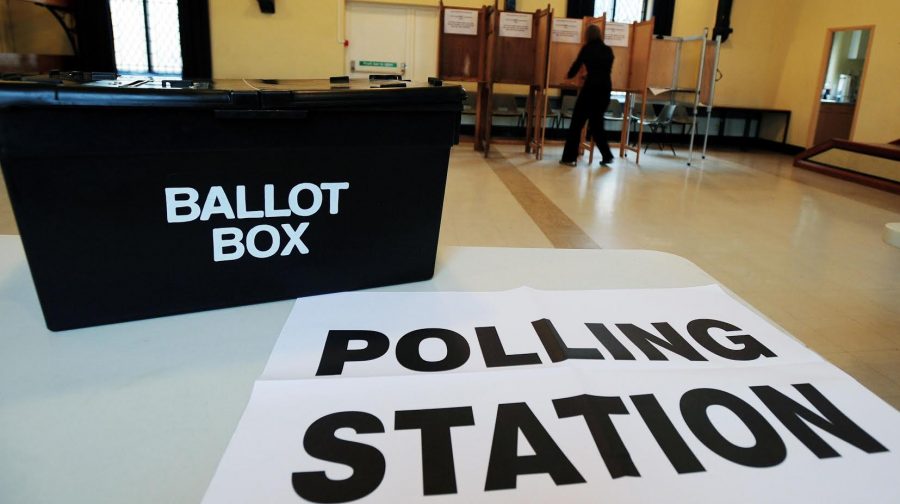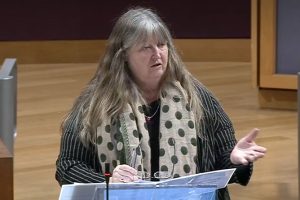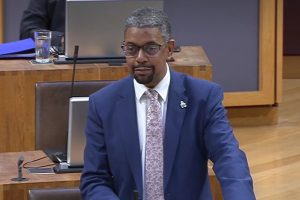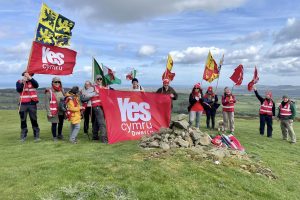THAT’s it as far as County Council politics go for now.
The Notice of Poll for May 5’s County Councils publishes tomorrow (Friday, March 18) and nominations open for the next County Council term on Monday (March 21).
Those nominations close on Tuesday, April 5.
That’s not a lot of time to get your act together if the elections have come as a horrible surprise, but plenty if you’ve prepared yourself to stand as a candidate.
If not, you need the nominations of ten electors resident in the Ward for which you seek election. However, while the Council goes into pre-election purdah, The Herald does not.
I WANT TO BE ELECTED?
It’s not only Pembrokeshire County Councillors who will be elected on May 5.
On the same day, Pembrokeshire elects its town and community councils.
Pembrokeshire has ten town councils and sixty-seven community councils.
Town and Community Councils serve their community by exercising a range of statutory powers and duties with the aim of improving the quality of life in their locality.
Each council is made up of elected members. However, in many cases, councillors are returned unopposed or are co-opted. For example, only two of the current Haverfordwest Town councillors were elected in 2017, the remainder were co-opted to fill vacancies during the council term.
Whether that’s healthy for democracy or not is a separate debate; but Pembrokeshire leads the way in the proportion of county councillors who did not face the electorate in 2017.
Twelve of sixty county councillors were returned unopposed.
Community and Town councils are responsible to their local electorates for delivering a wide range of services and for the provision and upkeep of local amenities.
County Councillors have a duty to serve their communities and work with Council officers to provide services to the public. Most County Councillors are also Town or Community Councillors
County Councillors meet together regularly as The Council, where they decide overall policy and set the organisation’s budget for the year.
County Councillors might be nominated by fellow councillors to sit on certain committees, for example, the Planning Committee or one of the Council’s scrutiny committees.
The Council Leader is elected by Councillors at the beginning of the Council term and the Leader selects the Cabinet.
PEMBROKESHIRE’S STRANGE POLITICS
Pembrokeshire is unusual in Wales because it returns relatively few councillors who stand for political parties.
Out of sixty councillors at the last election, the Conservatives returned twelve councillors (now eleven following a by-election) Labour returned seven, the Liberal Democrats one, and Plaid Cymru six.
The remainder of the councillors all stood as Independents.
There are, however “Independents” and “Real Independents”.
The Independent Political Group, led by Jamie Adams, ran Pembrokeshire as a one-party state until 2017, when its vote collapsed.
The IPG’s current membership is twelve, although its membership is fluid and some members inch towards more traditional party colours.
The 2022 elections will be the first under new boundaries.
STANDING DOWN
Several councillors are not seeking re-election: those include Sam Kurtz MS, whose Scleddau Ward disappears. Cllr Kurtz could have resigned his seat on election to the Senedd but chose to remain to avoid the costs of a by-election.
He’s donated his councillor’s allowance to local projects. Cllr Josh Beynon steps down, as does veteran Johnston councillor Ken Rowlands. Cllr Rod Bowen steps down from Clydau.
Cabinet member Cllr Phil Baker announced he would step down in May and there are rumours that several other prominent councillors from around the county will not seek re-election, including at least two other members of the IPG.
The changing boundaries will almost certainly affect the council’s make-up. The important question for any candidate standing as an independent is whether they will remain independent or join the Independent Political Group – or any other party grouping.
TURNOUT THE VOTE
In addition, the turnout in local elections is so low that a prospective candidate might only need to rally a handful of extra votes to see off a split field. That was the case in Pembroke Dock Central and Milford Central last time out, where the margins of victory for Cllrs Paul Dowson and Stephen Joseph were tiny. Those margins were not, however, as tiny, however, as the two votes that saw Cllr Tony Baron returned as member for the now abolished Amroth Ward.
In General Elections to Westminster, there are often safe seats in which any opposition effort is token.
Generally, that’s not the case in Council elections – although standing against Cllr Tony Wilcox in Pennar can be a sobering experience for his opponents.
Votes cast in the tens rather than the hundreds or thousands make a genuine difference to election outcomes.
Our prediction for the next Council is that Labour will perhaps gain the odd seat, the Conservatives will lose the odd seat, the Liberal Democrats might gain a seat, Plaid Cymru could gain a couple of seats in the north and east of Pembrokeshire, the IPG might lose ground due to established members’ decisions not to seek re-election. The majority of members will be “Real Independents”, or as Cllr Mike Stoddart calls them “Dictionary Independents”.
Beyond that, Cllr David Simpson is likely to remain leader with some changes to his Cabinet (one enforced) for the first part of the new administration’s term.
Replacing Cllr Simpson will be a tricky job: Jamie Adams will want it but might struggle for cross-party support; an openly political leader from a party group is unlikely to succeed in forming a coalition for the same reason.
All of which might explain why Cllr Adams is keen to find someone to stand against current Cabinet Members, particularly the Cabinet Member for Transformation, Cllr Neil Prior.

















